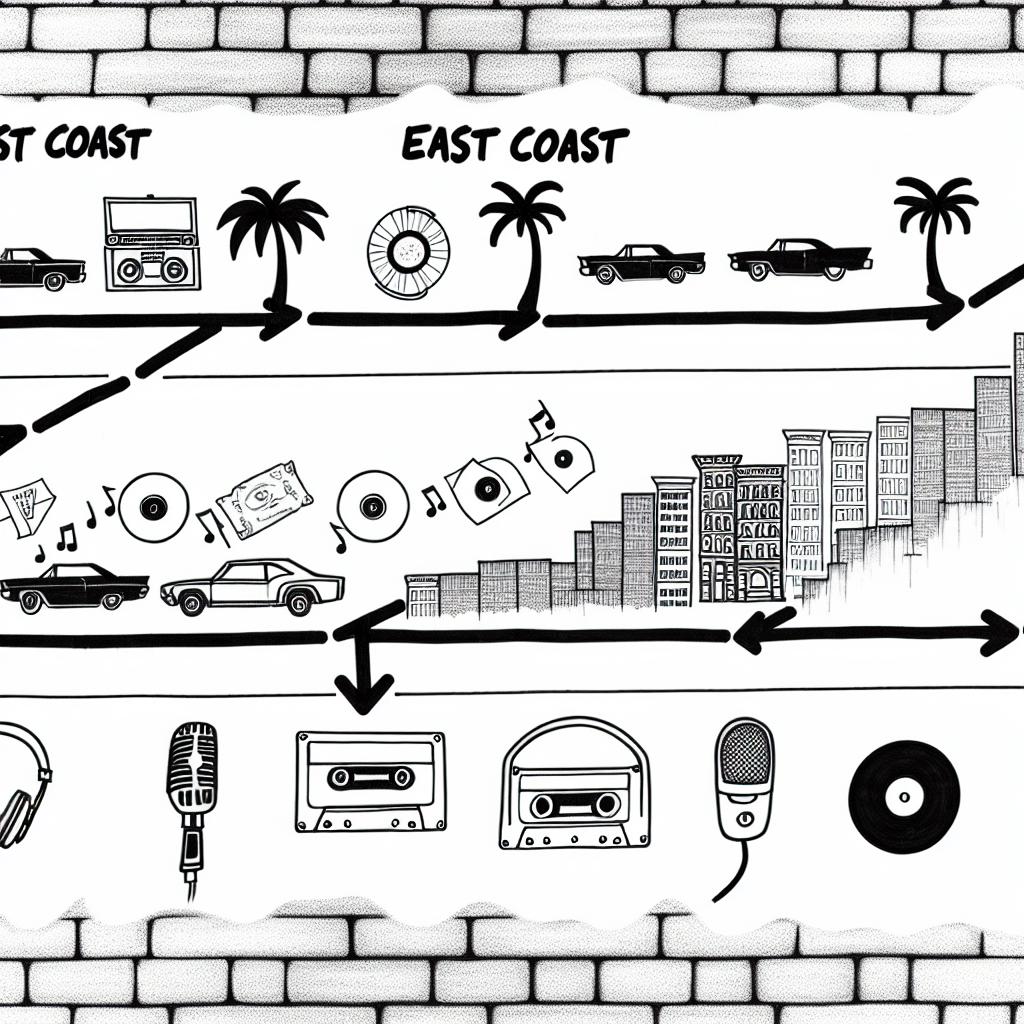The Evolution of Independent Hip Hop Artists
The hip hop industry has undergone profound changes over the years, with one of the most significant being the rise of independent artists. This trend has been heavily influenced by technological advancements, shifts in the music industry structure, and evolving consumer preferences. As independent artists gain more visibility and creative control, they are paving new paths within the hip hop landscape.
The Role of Digital Platforms
Technological advances, particularly the emergence of digital platforms, have been pivotal in empowering independent hip hop artists. Historically, artists relied on record labels to distribute their music, but platforms like SoundCloud, Spotify, and Bandcamp have revolutionized this process. These platforms enable artists to upload and share their music directly with a global audience, bypassing traditional gatekeepers. This model of distribution has democratized the industry, allowing diverse voices to be heard in ways that were previously unimaginable.
Digital platforms not only provide a means for distribution but also offer a space for artists to build their fan bases and cultivate their unique sounds. Independence in musical creation and dissemination has given rise to a more dynamic and diverse musical landscape where niche genres and subcultures can thrive.
Social Media as a Tool for Promotion
Social media is an essential tool for promoting music in today’s digital age. Platforms like Instagram, Twitter, and Facebook allow artists to connect with their audience on a personal level. By engaging with fans through these platforms, artists can share insights into their creative processes, update audiences on new releases, and craft their personal brand in real time. The visual and interactive nature of social media enriches the connection between artists and their followers.
Furthermore, YouTube is a crucial platform for publishing music videos and other visual content, significantly amplifying an artist’s reach. These promotional tools allow independent artists to build and nurture a global fanbase without the support of a record label’s marketing machinery.
The Impact of Streaming Services
Streaming services have radically transformed music consumption patterns, emphasizing convenience and accessibility. For independent hip hop artists, inclusion in curated playlists on platforms like Spotify can substantially increase their exposure. Such exposure can transform relatively obscure artists into household names, as these playlists are often a prominent way for listeners to discover new music.
In addition to reach, streaming services provide artists with valuable data and analytics. By analyzing listener demographics, genres listened to, and engagement metrics, artists can tailor their marketing strategies and adapt their music production to better fit their audience’s preferences. However, despite the broader reach and insights offered by streaming services, independent artists often find the earnings per stream are insufficient for substantial financial stability.
Financial Implications
Streaming’s low payout rates have prompted independent artists to seek alternate revenue streams. Merchandise sales such as branded clothing, accessories, and exclusive music releases are common avenues. Live performances also offer significant income, although they require upfront investments in logistics and promotion.
Furthermore, platforms like Patreon and Kickstarter have emerged as valuable tools, allowing artists to receive direct financial support from fans. Through Patreon, for instance, fans can subscribe to artists for a monthly fee in exchange for exclusive content, directly funding the artist’s projects.
Creative Freedom and Ownership
One of the most attractive aspects of being an independent artist is the creative freedom it provides. Unencumbered by the creative restrictions that record labels might impose, artists have more latitude to experiment with their sound, lyrics, and overarching artistic vision. This freedom can foster innovation, allowing artists to push boundaries and explore uncharted territories in their music.
Moreover, retaining control over their work ensures that artists benefit from all their creative endeavors. Full ownership of music compositions, recordings, and associated rights can lead to greater financial rewards in the long run, particularly if the music becomes commercially successful. This model of ownership contrasts with traditional record deals, where labels often retain significant rights to artists’ music.
Collaborations and Networking
Independent artists frequently collaborate with each other, creating a vibrant community atmosphere that encourages growth and creative synergy. These collaborations can expand an artist’s reach by tapping into each other’s fan bases and cross-promoting projects. Collaborations also provide networking opportunities, fostering professional relationships that can lead to future projects and creative partnerships.
Artistic partnerships can take various forms, from guest features on tracks to joint albums. Often, these collaborations emerge organically from mutual respect and admiration, rather than being orchestrated by label executives. The result is often music that feels authentic and resonates with listeners.
Challenges Facing Independent Artists
Despite the myriad advantages, independent artists face significant challenges. The fiercely competitive nature of the music industry makes it difficult to stand out. Without a record label’s resources, independent artists handle every aspect of their career, from creation to marketing, which can be daunting due to the vast skill set required.
Balancing Artistic Integrity and Commercial Success
A critical challenge for independent artists is balancing their artistic integrity with commercial considerations. Artists keen to preserve their unique voice may resist producing music solely designed for commercial success, which can put financial strain on their careers. Navigating this balance is vital for maintaining artistic credibility while achieving financial goals.
The Future of Independent Hip Hop
As technology evolves and audiences increasingly value authenticity and personal connection, the rise of independent hip hop artists shows no signs of slowing down. The growing accessibility of digital tools and platforms makes the independent path more feasible and appealing to artists freshly entering the industry.
Resources like online tutorials, software for music production, and direct-to-fan e-commerce solutions continue to lower barriers for aspiring artists. As the landscape of hip hop shifts, the industry’s future may increasingly be defined by these fearless independents, each contributing their distinctive voices to the genre. In this democratized musical ecosystem, the potential for innovation is immense, paving the way for a more inclusive and diverse hip hop culture.




